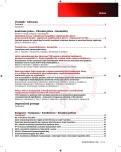Optimal process for searching for adult unrelated volunteer donors in unrelated donor registries
Authors:
P. Jindra 1,2; P. Sedláček 3; P. Žák 4
Authors‘ workplace:
Hematologicko-onkologické oddělení FN Plzeň & Český Národní Registr Dárců Dřeně, Plzeň
1; Biomedicínské centrum, Lékařská fakulta v Plzni, Univerzita Karlova v Praze, Plzeň
2; Klinika dětské hematologie a onkologie, FN Motol, Praha
3; IV. interní hematologická klinika, FN Hradec Králové
4
Published in:
Transfuze Hematol. dnes,20, 2014, No. 1, p. 6-12.
Category:
Comprehensive Reports, Original Papers, Case Reports
Overview
Allogeneic hematopoietic stem cell transplantation (HSCT) from unrelated adult donors is currently the standard and in many cases the only curative treatment option for a wide range of malignant and non-malignant haematological diseases. In the Czech Republic, it involves approximately 70–80% of patients indicated for allogeneic HSCT who do not have a related donor. The demand for unrelated donors has risen over the last decade and it is likely that a similar trend will continue. Longer time from diagnosis to transplantation appears to be a significant adverse negative factor affecting the outcome of unrelated HSCT. The provision of unrelated donors has been identified as a key source of delay. The article defines and analyses all the major causes that delay unrelated HSCT. It also aims to establish recommendations how to eliminate or minimize these factors. On the basis of these recommendations, the unrelated donor search process should be optimized both in medical and economic terms. The recommendations are based primarily on current international practice and recommendations of the WMDA (World Marrow Donor Association) and also take into account current practices and specificities of the transplant program in our country.
Key words:
transplantation, unrelated, donor registries, HLA typing
Sources
1. Pasquini MC, Wang Z, Horowitz MM, Gale RP. 2010 report from the Center for International Blood and Marrow Transplant Research (CIBMTR): current uses and outcomes of hematopoietic cell transplants for blood and bone marrow disorders. Clin Transpl 2010; 87-105.
2. Bone Marrow Donors Worldwide. Available at www.bmdw.org. (accessed on 1st December 2013).
3. Pidala J, Kim J, Schell M, et al. Race/ethnicity affects the probability of finding an HLA-A, -B, -C and -DRB1 allele-matched unrelated donor and likelihood of subsequent transplant utilization. Bone Marrow Transplant 2013; 48: 346-350.
4. World Marrow Donor Association. Available at www.worldmarrow.org (accessed on 1st July 2013).
5. Majhail NS, Murphy EA, Denzen EM, et al. The National Marrow Donor Program‘s Symposium on Hematopoietic Cell Transplantation in 2020: a health care resource and infrastructure assessment. Biol Blood Marrow Transplant 2012; 18: 172-182.
6. Lown RN, Shaw BE. Beating the odds: factors implicated in the speed and availability of unrelated haematopoietic cell donor provision. Bone Marrow Transplant 2013; 48: 210-219.
7. Petersdorf EW, Gooley T, Malkki M, Horowitz M, International Histocompatibility Working Group in Hematopoietic Cell Transplantation. Clinical significance of donor-recipient HLA matching on survival after myeloablative hematopoietic cell transplantation from unrelated donors. Tissue Antigens 2007; 69(Suppl 1): 25-30.
8. Lee SJ, Klein J, Haagenson M, et al. High resolution donor-recipient HLA matching contributes to the success of unrelated donor marrow transplantation. Blood 2007; 110(13): 4576-4583.
9. Woolfrey A, Klein JP, Haagenson M, et al. HLA-C antigen mismatch is associated with worse outcome in unrelated donor peripheral blood stem cell transplantation. Biol Blood Marrow Transplant 2011; 17(6): 885-892.
10. Jindra P. Praktický pohled na význam HLA shody pro transplantaci krvetvorných buněk od dospělých nepříbuzných dárců. Transfuze Hematol Dnes 2013; 19(2): 70-75.
11. Craddock C, Labopin M, Pillai S, et al. Factors predicting outcome after unrelated donor stem cell transplantation in primary refractory acute myeloid leukaemia. Leukemia 2011; 25: 808-813.
12. Frassoni F, Labopin M, Powles R, et al. Effect of centre on outcome of bone-marrow transplantation for acute myeloid leukaemia. Lancet 2000; 355: 1393-1398.
13. Heemskerk MB, van Walraven SM, Cornelissen JJ, et al. How to improve the search for an unrelated haematopoietic stem cell donor. Faster is better than more! Bone Marrow Transplant 2005; 35: 645–652.
14. Kollman C, Howe CW, Anasetti C, et al. Donor characteristics as risk factors in recipients after transplantation of bone marrow from unrelated donors: the effect of donor age. Blood 2001; 98: 2043-2051.
15. Tiercy JM, Nicoloso G, Passweg J, et al. The probability of identifying a 10/10 HLA allele-matched unrelated donor is highly predictable. Bone Marrow Transplant 2007; 40: 515-522.
16. Maiers M, Gragert L, Klitz W. High-resolution HLA alleles and haplotypes in the United States population. Hum Immunol 2007; 68: 779-788.
17. Schmidt AH, Baier D, Solloch UV, et al. Estimation of high-resolution HLA-A, -B, -C, -DRB1 allele and haplotype frequencies based on 8862 German stem cell donors and implications for strategic donor registry planning. Hum Immunol 2009; 70: 895-902.
18. Oudshoorn M, van Walraven SM, Bakker JNA, et al. Hematopoietic stem cell donor selection: The Europdonor experience. Hum Immunol 2006; 67: 405-412.
19. Abress L. Retention Strategies. Presented as an educational session at the WMDA Fall Meeting 2011 Available at: http://www.worldmarrow.org/fileadmin/Commit tees/EDUC/2011-EDUC/20111103-EDUC-Donor_Retention_NMDP.pdf (Accessed on 25th August 2013).
20. World Marrow Donor Association. Available at http://www.world-marrow.org/fileadmin/Committees/QAWG/20130314-QAWG-MEMO-KPI_for_registries.pdf (accessed on 1st Aug 2013).
Labels
Haematology Internal medicine Clinical oncologyArticle was published in
Transfusion and Haematology Today

2014 Issue 1
Most read in this issue
- Toxoplasma and immunodeficiency
- TP53 deletion in patients with multiple myeloma and monoclonal gammopathy of undetermined significance - molecular cytogenetic analysis of 84 patients
- Are we justified to classify patients with two unrelated clones with del(5q) and trisomy 8 as a subgroup of myelodysplastic syndrome of the type of 5q- syndrome?
- Optimal process for searching for adult unrelated volunteer donors in unrelated donor registries
